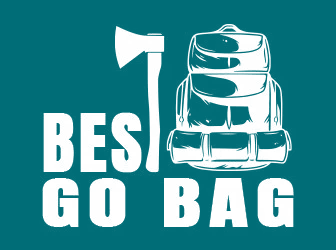Ask the average man or woman on the street what inflation is and they’ll be able to tell you.
They might not know the exact current inflation rate, what causes it or how it affects the overall economy. But they know it means higher prices for just about everything.
Ask the average woman or man on the street what “shrinkflation” is and you’ll probably get a blank stare. You won’t find it in the Merriam-Webster dictionary, but it’s being used more and more by economists and media these days.
Shrinkflation is a combination of “shrink” and “inflation.” It allows companies to increase operating margin and profitability by reducing costs. While at the same time maintaining sales volume. It’s used as an alternative to raising prices in line with inflation.
Smaller But Just as Expensive
Today I want to take a look at shrinkflation. Including how it affects us as consumers and what we can do about it.
Even if you’re not familiar with shrinkflation, you’ve probably noticed the results at your grocery store. Many of the food items you buy are getting smaller. But the prices aren’t.
Here’s an example reported by National Public Radio. Recently a store customer in Somerville, Massachusetts grabbed a “family-sized” box of General Mills cereal. It seemed smaller than normal.
The weight was 18.1 ounces. He then searched near the back of the store and found one of the old family-sized boxes of that same cereal. It was 19.3 ounces. He took both boxes to the checkout counter where he learned the price was the same.
Inflation’s ‘Devious Cousin’
Like many other companies, General Mills had downsized the contents of its family-sized cereal. But the storeowner charged the same price as previously. That’s why shrinkflation is being called inflation’s “devious cousin.”
Turns out the customer in the store that day was a former state assistant attorney general and a longtime consumer advocate. He’s been tracking shrinking products for a number of years and publishing the results on his website.
“Downsizing (shrinkflation) is really a sneaky price increase,” he said. “Consumers tend to be price conscious. But they’re not net-weight conscious.
“They can tell instantly if they’re used to paying $2.99 for a carton of orange juice and that goes up to $3.19. But if the orange juice container goes from 64 ounces to 59 ounces, they’re probably not going to notice.”
Sneaky? Yes. Illegal? No.
Now, to be clear, there’s nothing illegal about shrinkflation. For the most part companies can put as much or as little content into their products as they want to. And charge whatever they want for it.
The demand – or lack of it – will then determine whether or not that company is profitable.
As consumers, we’re better off paying attention to what we’re getting for our money than complaining about a shady sales tactic.
We should take the time to figure out what value we’re getting. And not fall for the gimmicks companies use to try to convince us to make a purchase. But many of us don’t. We tend to be gullible. Especially when we’re in a hurry to get to our next errand.
It Starts With Pricing Pressure
Among the many products identified as shrinking in size but maintaining the same price are chips and ranch dressing. Plus ice cream, cat food, baby shampoo and potting soil. As well as paper towels and toilet paper.
Examples include a bag of chips shrinking from 9.75 to 9.25 ounces. And a box of crackers decreasing from 16 to 14 ounces. Ice cream cartons have been shrinking for 20-plus years.
Shrinkflation seems to follow increases in items such as gasoline or grain. Manufacturers face pricing pressure from inflation. They believe consumers are likely to buy a product for the same price as before, even if it’s smaller.
Some manufacturers realize that some consumers will notice a smaller box and perhaps compare the price to the bigger box they’re used to buying.
So, those manufacturers sometimes make the new box taller than the old one, but with less content. They hope consumers will pay more attention to the box’s height than its width.
The Shrinkflation ‘Spin’
One company’s spokesperson responded to an accusation of shrinkflation by skating around the issue.
She said, “For consumers seeking the best price per ounce, the most value is normally in our larger boxes of cereal. This change also allows more efficient truck loading leading to fewer trucks on the road and fewer gallons of fuel used.
“Which is important in both reducing global emissions as well as offsetting increased costs associated with inflation.”
One superstore said it was selling smaller rolls of paper towels during the pandemic. That was for the purpose of keeping more rolls on the shelves to allow more people to purchase them.
A spokesperson for another company acknowledged they were shrinking the size of their containers. So they wouldn’t have to shock shoppers with a sharp price hike.
We Need to Be Diligent
In fairness to manufacturers and storeowners, they’re getting hit with the same inflation consumers are.
They have to do something to remain profitable, and their choices are limited. They can either raise prices or shrink their contents. Consumers aren’t crazy about either option. But they don’t like being deceived.
Economists are telling us that we are paying 7 to 10 percent more for groceries than we were before the pandemic hit.
That probably can’t be helped. But we’ll do ourselves a favor by comparison shopping more often. And by keeping one eye on the weight of what we’re buying and the other on the price.


